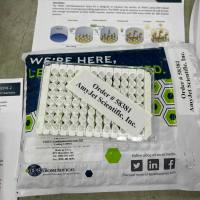Dopamine Transporter and Vesicular Monoamine Transporter Knockout Mice: Implications for Parkinsons Disease
互联网
319
One of the most valuable methods for understanding the function of a particular protein is the generation of animals that have had the gene encoding for the protein of interest disrupted, commonly known as a “quo;knockout”quo; or null mutant. By incorporating a sequence of DNA (typically encoding antibiotic resistance to aid in the selection of the mutant gene) into embryonic stem cells by homologous recombination, the normal transcription of the gene is effectively blocked (Fig. 1 ). Since a particular protein is encoded by two copies of a gene, it is necessary to have the gene on both alleles “quo;knocked out.”quo; This is performed by cross-breeding animals with one affected allele (heterozygote) to generate offspring that have inherited two mutant alleles (homozygote). This procedure has been used to generate animals lacking either the plasma membrane dopamine transporter (DAT; Fig. 2 ) or the vesicular monoamine transporter (VMAT2; Fig. 3 ). Both DAT and VMAT2 are essential for dopamine homeostasis and are thought to participate in the pathogenesis of Parkinson’s disease (1 –5 ).
![MAOB/MAOB蛋白Recombinant Human Amine oxidase [flavin-containing] B (MAOB)重组蛋白Monoamine oxidase type B ;MAO-B蛋白](https://img1.dxycdn.com/p/s14/2024/0914/386/8235194321829384381.jpg!wh200)





